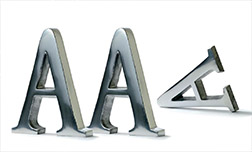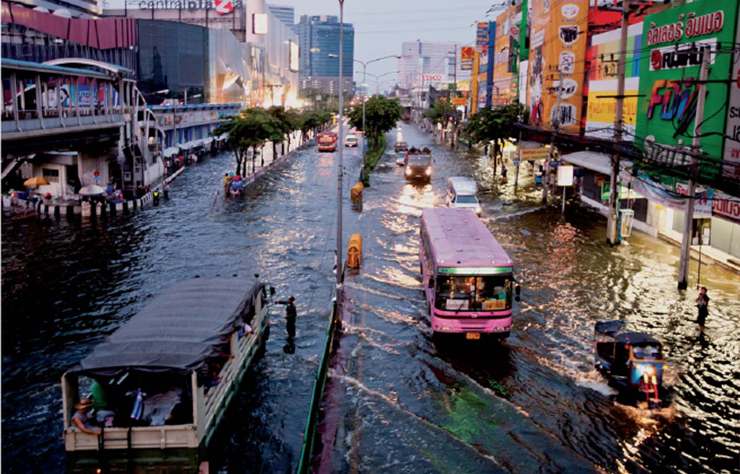Alfonso Valera
CEO of Aon Benfield Iberia
Madrid - SpainMarkets
Alfonso Valera was born in Madrid in 1968. He is married with five children and has devoted his entire career to reinsurance. He holds a degree in law and an Executive MBA from the IE Business School. He is also a certified translator of English. For most of his professional life he has been with Aon, which he joined in 1993 from a law firm. Until 1997 he was a Lloyd’s broker at the London office of Gil y Carvajal & Partners. Since then, he has held a number of different positions within the group. In 1999, Gil y Carvajal was merged into Aon. He has been managing director of Aon Re Iberia since 2003 and CEO of Aon Benfield since 2008.





“The payouts on recent catastrophe claims are ample evidence of the industry’s solvency, regardless of ratings”
Reinsurers have a stable, low-volatility market in Spain. Their only source of concern lies in natural disaster risks, which are covered by the Insurance Compensation Consortium (CCS-Consorcio de Compensación de Seguros). Boasting industry-exclusive technology, Aon Benfield, the world leader in reinsurance brokerage and consultancy, operates extensively in risk protection. The company’s top executive for Spain and Portugal reveals the details.
What are the key milestones in the development of the group’s reinsurance division in Spain?
Aon Re was already the world’s largest reinsurance broker back in 1999 following a number of acquisitions, with revenues marginally below USD 1 billion. After the takeovers of the 1990s, Aon Re found itself controlling five companies in Spain which were all in the same business: Reaseguros Gil y Carvajal, Le Blanc de Nicolay, Alexander Howden, Sedgwick Re and Jauch & Hübener, with a total of 120 employees. In 1999 they were all merged together. But the breakthrough came in 2009 with the acquisition of the brokerage and consultancy firm Benfield, which was listed on the London Stock Exchange. Everybody wanted to get hold of it but it was Aon Re that finally clinched it. We increased our size by about 50 per cent. Our revenues took a leap from USD 1 billion to 1.5 billion and our workforce went from 2,000 to 3,500 strong. And that was not the last deal. Aon as we know it is the result of 435 acquisitions. Two years later, the Aon group bought Hewitt, an HR and outsourcing consultancy firm. That was a huge shake-up for the group. So, consulting currently accounts for 40 per cent of our revenue, although we obviously capitalise on synergies.

Aon Benfield has built a huge presence in Europe by buying other companies. It is now the leader in Spain, Germany, France, Italy and the vast majority of other European markets
What role does Aon Benfield play within a major global brokerage and consultancy group?
Aon Benfield has built a huge presence in Europe by buying other companies. It is now the leader in Spain, Germany, France, Italy and the vast majority of other European markets. In Spain, Aon Benfield Iberia forms part of Aon Benfield, the Aon Group’s reinsurance business line. We work separately and independently from the group’s direct insurance division, Aon Risk Solutions.
60 per cent of Aon’s business is in the risk category, which includes direct insurance and reinsurance. Aon Benfield is a specialised, fairly independent unit reporting to the group CEO. Our role is different from the role of Aon Risk Solutions. Our clients are insurance and reinsurance companies, not the actual policyholder. Beyond risk-related businesses, the Aon Group’s consulting operations are mainly channelled through Aon Hewitt, which focuses on human resources.
What is the relative size of the individual businesses in your portfolio?
The catastrophe management unit plays a crucial role for insurance companies
Life reinsurance in Spain is worth some EUR 400-500 million in terms of total premiums, and Non-Life is worth about EUR 3.2 billion. In Spain, 20 per cent of our revenue comes from the Life branch and we are working to grow that further, but the figures are not that impressive in terms of reinsurance. Liability accounts for another 20 per cent and the rest is damage. It did not use to be like this, though. Revenues from liability were much more significant but the volatility in this market is quite low. Motor insurance was mayhem but now it is quite restrained. Problems are so few it could almost be considered as a commodity. We place our business mostly with the leading international reinsurers and, in the case of marine and aviation risks, special schemes and retrocessions, with the London Exchange. Domestic business usually stays in the Spanish reinsurance market. Aon Benfield Iberia places reinsurance premiums from the Spanish and Portuguese markets worth approximately EUR 350 million in total.
Aon Benfield is the market’s leading brokerage firm. What is your greatest strength?
Reinsurance premiums have remained stable for the last ten years without any increase. Global reinsurance is absolutely stable
Our capacity and our analytics capabilities are what makes a difference. Aon Benfield Analytics is made up of more than 400 experts in a range of disciplines including actuarial sciences, mathematics, meteorology and geology. This division includes our catastrophe risk management unit, Impact Forecasting, which has developed its own, industry exclusive forecasting models (most recently a flood model for Eastern Europe and an earthquake model for North Africa), as well as catastrophe management instruments such as Impact on Demand. The catastrophe management unit plays a crucial role for insurance companies and we believe Aon Benfield is the clear market leader in this area.
As regards other elements that make a difference, we have ReMetrica®, Aon Benfield’s proprietary dynamic financial analysis software, which we use in reinsurance optimisation and actuarial analysis studies. As well as being used by us as our chief analytics tool, we have licensed more than 250 insurance and reinsurance companies to use it for internal calculation purposes. Every year a host of companies ask us to provide advice on the purchase of their reinsurance. We study the volatility of their portfolios and work out the expected profit for the reinsurer or the cost of capital for the reinsurance ceded.
How efficient would you say Analytics and ReMetrica® are at assessing loss ratios and catastrophe scenarios?
The Spanish market is quite nicely proportioned. There is a large supply of reinsurance but the demand is not so plentiful, particularly taking into account that in Spain natural disasters are covered by the CCS
Focusing on the Spanish market, I would say it is pretty predictable. Natural disasters represent the biggest challenge in terms of predictability. In Spain, these risks are covered by the Insurance Compensation Consortium (CCS) in a number of insurance classes. We do not work with the CCS because it is self-sufficient in its role. Besides, disasters are not that common in Spain. Aon Benfield invests USD 100 million every year in its analytics department. In Spain we have six actuaries working to cater for companies that ask us not only for reinsurance optimisation studies but also for an analysis of their portfolio.
Are these software applications designed to analyse uncommon risks, such as offshore oil rigs for instance?
Major risks are usually placed on facultative reinsurance. Aon Benfield Analytics and ReMetrica® are used to analyse our clients’ portfolios, which are reinsured on a treaty basis. We are in no doubt about who our clients are: insurance companies. We give them guidance and advice.
What do insurance firms expect from reinsurance today? Are the major insurance groups not increasing their retentions?
Traditionally, insurance companies have turned to reinsurance for financial protection. This is still the case. Reinsurance premiums have remained stable for the last ten years without any increase. Global reinsurance is absolutely stable.
The market has seen movements towards consolidation to a certain extent. Does this mean there are now fewer reinsurers?
Everywhere you go you see concentration. In Spain too there are fewer insurance companies. But I do not think there has been a significant reduction in the number of reinsurers.
HQ in Europe
Aon has been headquartered in London since 2012. How is Aon Benfield organised?
Basically, we are divided into two regions: the Americas, including North and South, with head offices in Chicago, and then the rest of the world, which is led from London and is split into EMEA and Asia-Pacific.
What risks is Aon Benfield most concerned about?
The prime risk for reinsurance is natural disasters, i.e. earthquakes, storms, floods, and the like. These set the standard. As such, they are the risks Aon Benfield and all the other major reinsurers devote the most time to. They are also where the stakes are highest. This is where capital markets and traditional reinsurance capacity converge. In Bermuda there is a huge market revolving almost exclusively around underwriting catastrophic risks in a commendably opportunistic, short-term spirit.
The UK has lost its triple-A rating for the first time in history. Any consequences?
A downgrade from triple-A to double-A does not entail too many problems. Currently, only 11 countries still have a triple-A rating, four of which are in the euro zone: Finland, Germany, Luxembourg and the Netherlands. The other four European nations that have their own currency and a triple-A rating are Denmark, Norway, Sweden and Switzerland. There is only one Asian country, Singapore, one in the whole of the Americas, Canada, and lastly Australia. These are the 11 countries with the highest credit rating according to the three agencies. At one point, reinsurance companies had their credit ratings downgraded across the board. After that, many of them were not too concerned about recovering their previous rating. They learned to live with the double A because the general view is that the triple A requires having too much idle capital. Nobody is out to find triple-A reinsurers - there would be no point. The payouts on claims are ample evidence of the industry’s solvency, without the need to meet this requirement.
How has the global reinsurance market been affected by the financial crisis?
One of the first issues we need to take into account is the duration of the crisis. It is proving so long, there is quite a mixed bag. But the fact is that when the bank meltdown occurred, apart from AIG the insurance and reinsurance industry hardly produced any other major problems. This holds especially true in the case of reinsurance. The top 25 reinsurance companies survived. Focusing on Spain, we are already seeing some downgrades as a result of the global crisis. But these are more down to the global and the domestic situation than to any management issues. Recently, a reinsurer was telling me how they undergo stress tests every year. But paying for huge catastrophic claims in Japan, Australia, New Zealand and Thailand in the middle of a financial crisis is a major stress test in itself! All reinsurers have fulfilled their payment obligations. One advantage of reinsurance is that it is a high-capital industry.
Some insurance companies are not large enough to have a reinsurance division. What moves insurance companies to seek your services?
It depends. Every company is a world itself and every market is different. In the English-speaking world, reinsurance is for the most part brokered. In the UK, 90 per cent of business is placed through a reinsurance intermediary. In the US that share is probably 70 per cent, whereas in Germany it might be just 20 per cent. The reasons that drive an insurance company to use a reinsurance broker vary. Some use them merely for convenience’s sake. Others actually need help, or risk and financial flows analysis, or placement analysis, or relations analysis because they do not have these capabilities. Obviously, we believe we provide valuable advice and we have seen the brokerage share grow substantially over the last few years. We think this trend will endure.
Leaving aside captives registered in tax havens, what is the current situation in the reinsurance market?
It is certainly complex because everything is changing. For example, thanks to a number of incentives, up to 35 reinsurance companies have established themselves in Zurich over the last five years. Globally, there are still two leaders: Munich Re and Swiss Re, which operate in every market with very substantial turnovers. Then, there are minor variations in the top ten list. I do not really believe there is a high degree of concentration. Ultimately, all the discussions going around in the market boil down to the fact that there is a constant demand and a growing supply. This has been the case for the past ten years.
The Spanish market is quite nicely proportioned. There is a large supply of reinsurance but the demand is not so plentiful, particularly taking into account that in Spain natural disasters are covered by the CCS. In other markets you see capacity shortcomings, supply contraction and rising prices, which have never happened here. That is why Spain is extremely stable where reinsurance prices are concerned. In all my career I have only seen one instance of supply contraction and it was a consequence of 9/11. There have not been any similar situations since.
Reinsurance has always been a highly international market. Which country transfers the most risk through reinsurance?
Focusing on Spain, we are already seeing some downgrades as a result of the global crisis. But these are more down to the global and the domestic situation than to any management issues
The largest market in the world is the US, undoubtedly. Within the US, the largest transferor to reinsurance is the state of Florida, which is to be expected, given the great frequency of hurricanes and high exposure of people and property there.
What role does Aon Benfield play in relation to captive reinsurers?
Very few of the captives belonging to industrial or financial groups take on third-party business. Aon Benfield provides advisory services in this field. Ultimately, captives provide these corporate groups with a means of self-insurance and a way to optimise their resources and tax policies. We also provide advice for reinsurance company set-up and financing.
What about risk securitisation services?
Aon Benfield is the leading operator in the placement of catastrophe bonds, ahead of all our competitors in this area, which include some large investment banks. We have a dedicated unit for this area, Aon Benfield Securities, which operates as an investment bank providing advisory services and catastrophe bond placement and underwriting for our issuer clients.
With good returns for bond holders?
Usually, yes. That is why these bonds continue to be issued and placed on a recurring basis. There were moments of uncertainty at the beginning of the financial crisis because Lehman Brothers was the guarantor, but those issues were recomposed. Our job is placing the issues; we operate as an investment bank.
Stable Spain
How is the Spanish reinsurance market viewed from outside?
The fact that the disaster business is almost inexistent makes Spain a highly individual market and therefore largely stable. The country’s situation has had an impact on ratings and this has been discussed at length within our dedicated department because when ratings drop, alarm bells start ringing and everything is put under the microscope. Fortunately, Aon Benfield has had the good sense not to take any measures with regard to Spanish entities. Although there has naturally been a great deal of concern.
Who is your main client in Spain?
MAPFRE, by far. Namely accepted reinsurance, more than ceded reinsurance.
To what extent is the Spanish market appealing to international firms at the present time?
We will soon find out. At the moment, we are closely monitoring Cesce’s privatisation, which is under way. Credit insurance is a very special business. In 2012, we took part in a huge life financial reinsurance deal. This becomes an option at times of momentary capital needs. It simply involves monetising certain flows. Enormous profits were produced. Basically, it concerns the banks, which have a choice of three options: they can keep their business unchanged, sell it or resort to financial reinsurance, which avoids having to sell the company and allows them to recover it at a later stage. This is recorded as a real sale and is indeed a real sale. There is scope for more transactions like this in Spain and in Europe as a whole. In the deal Aon Benfield Iberia arranged, we managed to secure a purchase by Berkshire Hathaway, much to the surprise of many and proof that a market like Spain always arouses interest.
What are you concerned about at the moment?
We are concerned about growth, like everyone else. In Spain and Portugal, the insurance and reinsurance markets are undeniably going through a stage of contraction. Between Spain and Portugal combined, we bring in just under EUR 14 million in brokerage fees. The actuarial analytics resources we use in Portugal are based in Spain. The Portuguese reinsurance market is completely different from the Spanish market. It has high volatility, high catastrophic risk, and it is smaller in size. One area where we can help our clients is support and access to the Aon Benfield network. You have to realise we place reinsurance premiums worth more than USD 30 billion, with a high degree of geographical diversification. We have offices in many countries around the world.
Turning to the motor insurance branch, how does the official Disability Percentage Table Baremo affect your reinsurance placements?
This goes back to the 1990s, when the claim ratio in the motor branch was extremely complicated and volatile. There was no way of knowing how much compensation would be payable for personal injury. Once the Table became mandatory by law -which is unique in Europe- the problem ended. Moreover, the accident rate has improved. It is now at a similar level to the 1960s, when there were only one million cars on the roads, compared to 31.4 million cars today, so the situation is altogether different. For the purposes of reinsurance, this has meant increasingly higher retentions. Reinsurance works on a stop-loss basis in this branch. In other words, the reinsurer pays the losses exceeding, say, EUR 1.25 million, although some companies retain much larger sums. Only a very small proportion of losses are transferred to reinsurance.

What other lines of business does Aon Benfield engage in?
The country’s situation has had an impact on ratings and this has been discussed at length within our dedicated department because when ratings drop, alarm bells start ringing and everything is put under the microscope
In addition to analytics and investment banking, the group provides advisory services and reinsurance programme placement. We have a number of speciality areas (energy and marine, credit and suretyship, civil liability, retrocession, etc.) and we are market leaders in reinsurance programme placement, including both facultative and treaty reinsurance. We are currently placing approximately USD 30 billion in reinsurance premiums globally, which gives us not only scale and negotiating leverage but also a thorough understanding of the market.
We additionally offer support services in client relations with rating agencies and advice on insurers and reinsurers. We are familiar with the capital models used by the leading agencies and we provide guidance on how they work and what effect certain decisions can have on a client’s rating.
What is your view on Asia?
Asia is an extremely interesting region which is very much a focus of attention for Aon Benfield. It includes large, well established markets like Japan, where Aon Benfield has had a long, significant presence. There are also large developing markets where significant growth is expected in the near future, such as China. Reinsurance is crucial for businesses in this region due to the high incidence of natural hazards. Proof of this is the fact that in 2011 two of the largest losses in history took place in Asia: the Tohoku earthquake and the Thailand floods. In addition to Japan and China (Beijing, Hong Kong and Shanghai), Aon Benfield has offices in India, Pakistan, Thailand, Vietnam, the Philippines, Taiwan, Indonesia, Malaysia and Singapore.



